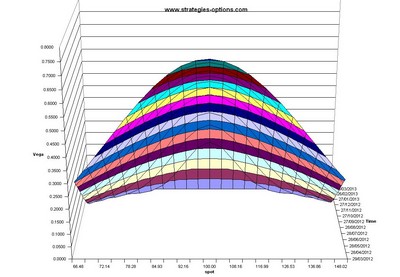Credit Risk How to Measure Credit Risk with Types and Uses?
Contents:


For retail, risk weight is 35% for mortgage exposures and 75% for non-mortgage exposures . Diversification lenders face a high probability level in the case of small borrowers with an inevitable risk of default. Lenders can mitigate credit risks by diversifying the borrower funding pool. They can set specific standards for lending, including requiring a certain credit score from borrowers. Then, they can regularly monitor their loan portfolios, assess any changes in borrowers’ credit worthiness and then make any adjustments.
- But, at the end of the day, none of the methods provide absolute results—lenders have to make judgment calls.
- Depending on the classification of the country in which the obligor/guarantor is domiciled, it is likely that an obligor/guarantor classified in buyer risk category CC2 would be rated between A+ and B- or worse by accredited CRAs.
- Exposure at Default evaluates the amount of loss exposure that a lender is exposed to at any particular time, and it is an indicator of the risk appetite of the lender.
- There is a risk that the issuer of a bond will not pay back its face amount as of the maturity date.
- With a secured product, such as an auto or home equity loan, you pledge something you own as collateral.
$2.95T of total unpaid principal balance of mortgage loans have been partially covered by Single-Family CRT vehicles at issuance as of Q4 2022. The Federal Deposit Insurance Corporation is an independent agency created by the Congress to maintain stability and public confidence in the nation’s financial system. Learn about the FDIC’s mission, leadership, history, career opportunities, and more. SAS can be easily integrated with relational databases and mainframe. Many companies execute both data extraction and model building steps in SAS environment only. Generally, lenders apply one rigid model to all mitigation approaches, which is wrong.
How IFRS 9 is different from Basel III?
Here’s what they mean, why they’re important, and some tips for how to mitigate them. Moody’s Analytics Portfolio Analyzer is one of the best portfolio analyzer you will find. It’s a powerful risk management & valuation tool for lending portfolios. QRATE allows you to estimate how a change in an entity’s financials will impact its Moody’s Investors Service credit rating, adding depth to your credit analysis of public finance entities across segments. The Moody’s Analytics Pulse platform helps credit departments protect their accounts receivable portfolios from unpredictable businesses by delivering timely insights about their customers and suppliers.

It can also be due because of a change in a borrower’s economic situation, such as increased competition or recession, which can affect the company’s ability to set aside principal and interest payments on the loan. Loss Given DefaultLGD or Loss Given Default is a common parameter to calculate economic capital, regulatory capital, or expected loss. It is the net amount lost by a financial institution when a borrower fails to pay EMIs on loans and ultimately becomes a defaulter. CreditworthinessCreditworthiness is a measure of judging the loan repayment history of borrowers to ascertain their worth as a debtor who should be extended a future credit or not. For instance, a defaulter’s creditworthiness is not very promising, so the lenders may avoid such a debtor out of the fear of losing their money. Creditworthiness applies to people, sovereign states, securities, and other entities whereby the creditors will analyze your creditworthiness before getting a new loan.
This may be helpful if you lose your job or experience other setbacks. The investors in a bond issue also face credit risk as they are actually lending money to the issuer. The credit risk can arise in three forms, namely, default risk, credit spread risk, and downgrade risk. The obligor/guarantor has a very strong capacity for repayment and this capacity is not likely to be affected by foreseeable events. The obligor/guarantor has a limited or very limited susceptibility to adverse effects of changes in circumstances and economic conditions. A good credit risk management scheme improves the capacity to foresee, which helps evaluate the potential risk in every transaction.
Ways to Manage Credit Risk
Analysts can’t change model parameters easily, which results in too much duplication of effort and negatively affects a bank’s efficiency ratio. Learn why SAS is the world’s most trusted analytics platform, and why analysts, customers and industry experts love SAS. Eligible Wells Fargo customers can easily access their FICO® Credit Score through Wells Fargo Online® – plus tools tips, and much more. Don’t worry, requesting your score in this way won’t affect your score. Improve your chances of getting a loan by learning what lenders look for.
Indiana Set to Become the Seventh State with a Comprehensive … – WilmerHale
Indiana Set to Become the Seventh State with a Comprehensive ….
Posted: Fri, 14 Apr 2023 19:53:40 GMT [source]
Module 2 describes these different risk types and the characteristics that determine whether a particular credit risk falls into one risk type or another. It goes beyond the credit risks that arise in the traditional banking book to examine those that arise in the trading book and the regulatory and risk management implications of this distinction. The module also describes in detail how banks segment different customer types and why this differentiation matters from a credit risk point of view. This article explains basic concepts and methodologies of credit risk modelling and how it is important for financial institutions.
What Are the Five Cs of Credit?
Basel IIIBasel III is a regulatory framework designed to strengthen bank capital requirements while also mitigating risk. It is an extension in the Basel Accords, designed and agreed upon by members of the Basel Committee on Banking Supervision. Other MathWorks country sites are not optimized for visits from your location. Data was presented using descriptive statistics involving frequency tables and percentages; data was also analyzed using SPSS version 20. Correlation and regression analysis were adopted to identify the relationship between the variables.
Ellensburg Man Sentenced to 11 Years in Two Deaths from Fentanyl – newstalk870.am
Ellensburg Man Sentenced to 11 Years in Two Deaths from Fentanyl.
Posted: Fri, 14 Apr 2023 16:52:26 GMT [source]
The five Cs of https://1investing.in/ are character, capacity, collateral, capital, and conditions. The five Cs of credit are important because lenders use them to set loan rates and terms. Consumers who are higher credit risks are charged higher interest rates on loans. Exposure at Default evaluates the amount of loss exposure that a lender is exposed to at any particular time, and it is an indicator of the risk appetite of the lender. EAD is an important concept that references both individual and corporate borrowers.
Credit risk
The portfolio managers also using rating transition matrix to measure downgrade risk. Learn more about our long-standing Mortgage Insurance Risk Share transactions, in which we purchase credit enhancements from mortgage insurance companies. Learn more about our CIRT program, designed to transfer risk to insurance providers, who in turn may transfer that risk to reinsurers.

Through the cycle PDIt predicts average default rate over an economic cycle and ignores short run changes to a customer’s PD and closely resembles long-term average default rate. This method also comes with higher accuracy as statistical and machine learning models considers hundreds of data points to identify defaulters. Indeterminates should not be included as it would reduce the discrimination ability to distinguish between good and bad.
Best Practices in Credit Risk Management
Opening another office, purchasing new computers or loading up on inventory can all be too much, too soon. Every single item or service a business purchases affects its liquidity risk. For more information on credit scoring models, see MATLAB®, Financial Toolbox™, and Risk Management Toolbox™.
The value of your collateral will be evaluated, and any existing debt secured by that collateral will be subtracted from the value. Keep in mind, with a secured loan, the assets you pledge as collateral are at risk if you don’t repay the loan as agreed. In addition to the credit report, lenders may also use a credit score that is a numeric value – usually between 300 and 850 – based on the information contained in your credit report. The credit score serves as a risk indicator for the lender based on your credit history. Credit bureau scores are often called “FICO® Scores” because many credit bureau scores used in the U.S. are produced from software developed by Fair Isaac Corporation . While many lenders use credit scores to help them make their lending decisions, each lender has its own criteria, depending on the level of risk it finds acceptable for a given credit product.

profit and loss statement contracts can mitigate risks in bond investing by transferring a given risk from one party to another without transferring the underlying bond or other credit asset. Prior to credit default swaps, there was no vehicle to transfer the risk of a default or other credit event, from one investor to another. Education Understanding Interest Rate Swaps Interest rate swaps have become an integral part of the fixed income market. These derivative contracts, which typically exchange – or swap – fixed-rate interest payments for floating-rate interest payments, are an essential tool for investors who use them in an effort to hedge, speculate, and manage risk. Learn more about DUS, our flagship program that requires lenders to retain some of the credit risk of the loans they sell to us — ensuring a stake in each loan’s performance. Fannie Mae partners with private sources of capital to transfer mortgage credit risk, develop broad and liquid markets, and reduce taxpayer risk.
- Consumers who are higher credit risks are charged higher interest rates on loans.
- The models use past data and various other factors to predict the probability of default and inform credit decisions.
- The probability of rescheduling is an increasing function of debt service ratio, import ratio, the variance of export revenue and domestic money supply growth.
- If a business no longer has the need for a certain asset and an interested buyer appears, selling might make sense.
Such risks are more in the case of small borrowers with the most default probability. The leading cause of credit risk lies in the lender’s inappropriate assessment of such risk. One of the modest ways to calculate credit risk loss is to compute expected loss which is calculated as the product of the Probability of default, exposure at default, and loss given default minus one. The capital requirement here is calculated using SA-CCR, the Standardized approach for counterparty credit risk. This framework replaced both non-internal model approaches – Current Exposure Method and Standardised Method .
Investment Management Update – April 2023 Skadden, Arps, Slate … – JD Supra
Investment Management Update – April 2023 Skadden, Arps, Slate ….
Posted: Fri, 14 Apr 2023 23:20:22 GMT [source]
Credit risk is a lender’s potential for financial loss to a creditor, or the risk that the creditor will default on a loan. Lenders take several factors into account when they assess a borrower’s risk, including their income, debt, and repayment history. When a lender sees you as a greater credit risk, they are less likely to approve you for a loan and more likely to charge you higher interest rates if you do get approved. Descriptive research was used to collect detailed information, while analytical research has been used to analyze phenomenon. The main sources of data were financial reports, annual reports, text books, articles and company publications that included brochures and magazines. Questionnaires and interviews were also used to obtain the relevant data.
